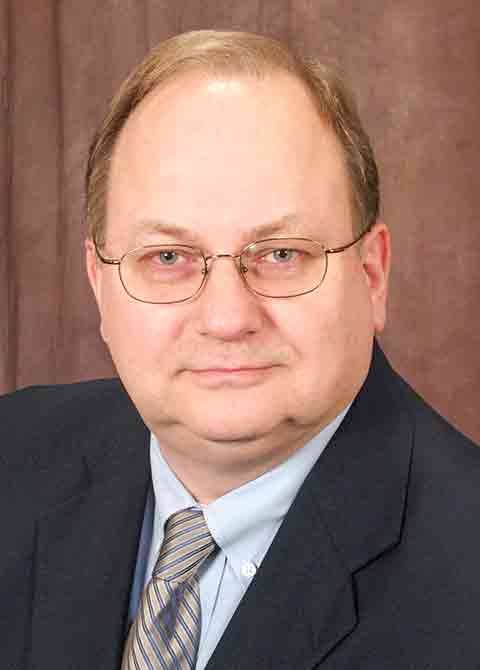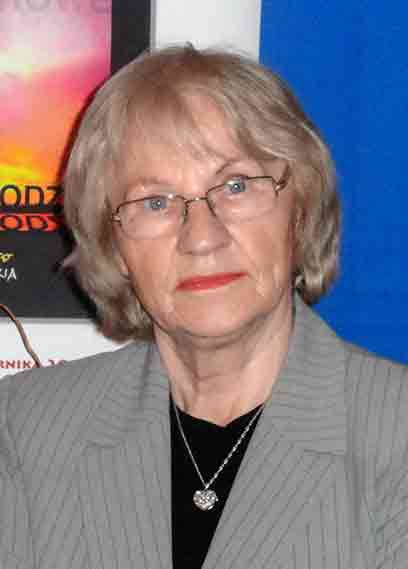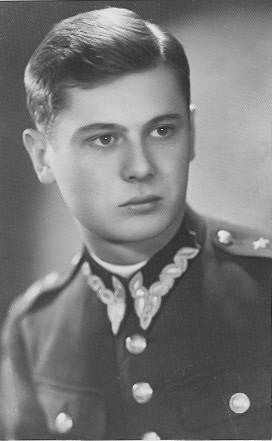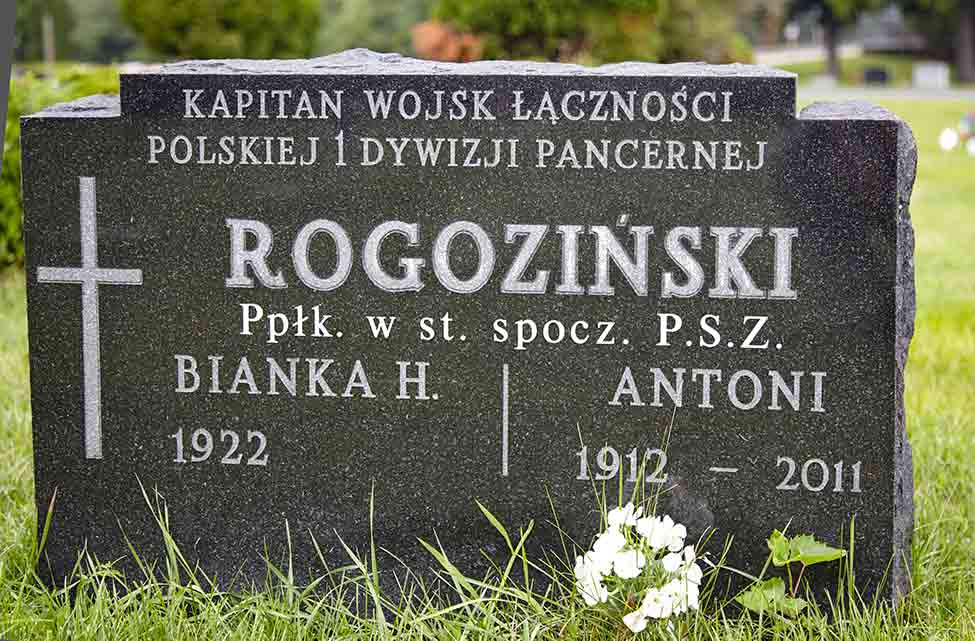I dream that Poland will get to know the Polish hero and the unwavering soldier who sacrificed his life in exile for the Polish cause.
— (Daughter) Barbara Bożena Banasikowski-Smith (1948-2018)
In 1992, Jan Nowak-Jeziorański wrote an article in the New York "Przegląd Polski" about the activities of the Polish diaspora on behalf of Poland. Here is a short fragment: "Historians in Poland treat the role of the Polish diaspora more than marginally." He also gives an example of a book edited by Aleksander Gieysztor, "Historia Polski," in which only one of 720 pages is devoted to the subject of the Polish diaspora. Decades have passed since then and little has changed in this regard.
It is worth recalling that Free Poland after 1918 was built by all Poles: from all partitions, those returning from emigration and those who remained in emigration. In the construction of the Polish historical narrative, which has been ongoing since 1989 and is based mainly on the Warsaw-centric perspective of history, generally omitting the history of Polish emigration, and in the absence of interest from the media and educational organizations in figures who influenced the preservation of Polish national identity abroad after World War II, the heroes of emigration are being forgotten.
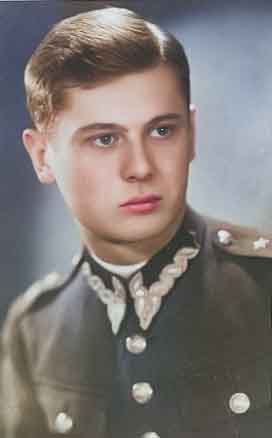
Lieutenant Edmund Banasikowski. (Source: Banasikowski Family. Color: A. Woźniewicz)
Among such figures we undoubtedly include Edmund Jerzy Banasikowski, colonel of the Polish Army and the Home Army, co-creator of "Wachlarz", journalist, collaborator of Radio Free Europe and activist of the Polish American community. His life and conscious patriotic activity should be a model for all of us, especially for those who are entering adulthood.
The Second Polish Republic
Edmund J. Banasikowski was born on April 3, 1914 in Siedlce. His father, Władysław, was a legionnaire and under his influence, his son Edmund chose a career as a professional soldier. He entered the Infantry Cadet School in Komorów-Ostrów, from which he graduated in 1935. The President of the Republic of Poland, Ignacy Mościcki, appointed him a second lieutenant in the infantry officer corps. After completing the school, he was assigned to the 23rd Regiment named after Colonel Leopold Lis-Kula in Włodzimierz Wołyński.
As a young officer, Second Lieutenant Banasikowski had the honour of saying goodbye to Marshal Józef Piłsudski. He marched in the funeral procession, taking the Marshal to his eternal guard. At the outbreak of World War II, Edmund Banasikowski was the commander of the section of the "Mikołów" Fortress Battalion (Silesian Province). On the morning of September 1, 1939, his fellow officers gathered to confer and decide on the method of defence against the Germans. Banasikowski ran to a nearby school for maps. When he returned, there was a deep bomb crater at the place of the conference. His colleagues were killed. He considered his survival a miracle. He would experience similar miracles several more times in his life, because his fight against the invader did not end there.
He took part in the battle fought in the first days of the war near Mokra. When on September 17 the Soviets attacked Poland from the east and it was known that defeat was inevitable, Banasikowski did not lay down his arms and did not go into captivity. After the end of the September Campaign (in the years 1939-1941) he took part in the underground in the area of Siedlce and Warsaw. He was one of the organizers and activists of the underground fight.
Activities in the Home Army – "Wachlarz"
From the "Union of Armed Struggle" and the "Home Army" after the outbreak of the German-Soviet war, at the request of the British government organization Special Operations Executive (SOE), a group of about a thousand soldiers was separated from the Home Army for sabotage operations in the east, which was given the codename Wachlarz (The Fan). It was an elite group and initially it included officers and a large group of "cichociemni" (the Silent Unseens) dropped into the country in 1942. Edmund Banasikowski, who operated under the pseudonym "Jeż̇" (Hedgehog), was one of its creators. From January 1942, he was appointed commander of section IV, operating in the vicinity of Polotsk, Vitebsk and Nevel.
The tasks of "Wachlarz" included destroying rail routes used by the Germans to deliver supplies to the Eastern Front, and organizing cover for the planned general armed uprising on Polish soil against the Germans retreating from the Eastern Front or the advancing Red Army. These plans soon changed. After the signing of the Sikorski–Mayski Agreement, an order was issued to provide the Soviets with military and sabotage assistance. The duties exceeded the group's capabilities, so by order of the commander of the Underground Army, General Grot Rowecki, of January 22, 1943, "Wachlarz" was subordinated to the management of Kedyw and assigned to the Vilnius district of the "Home Army".
On July 7, 1944, former Wachlarz soldiers (including Edmund Banasikowski) took part in Operation Ostra Brama. Home Army units attacked Vilnius, which had been occupied by the Germans. Several days of fighting together with the Red Army led to the liberation of the city on July 13. Shortly afterwards, the Soviets treacherously arrested Polish commanders and began disarming the Home Army soldiers, which resulted in death sentences, imprisonment, and deportations to Siberia.
Banasikowski was arrested twice by the Germans and three times by the NKVD. He always managed to avoid death. At the end of 1944, in Vilnius, together with Antoni Snarski, he edited the secret bulletin "Na zew ziemi ojczystej" (On the Call of the Motherland). As an officer of the Home Army and commander of many actions, he was a staunch opponent of the new occupation of Poland. Knowing that he could be pursued by the Polish communist government, he decided to leave Poland.
In Exile: Sweden
In 1945, arrested by the NKVD, he managed to escape from prison and get to Warsaw. In the face of growing Soviet terror and repressions against former AK soldiers, he decided to leave the country. In 1946, he was transferred to Sweden on a ship transporting coal. He took with him a deep belief that the fight for a free Poland was not over yet.
In Sweden he met Zofia Brzozowska, a former Polish representative in speed skating at the 1936 Winter Olympics in Garmisch Partenkirchen. As a prisoner of the Ravensbrück concentration camp, she was recovering in Sweden to regain her health and mental balance. They got married, but their troubles were not over yet. She and her daughter emigrated to the USA, and he waited another year for the opportunity to emigrate. In 1951, he reached the United States via Canada.
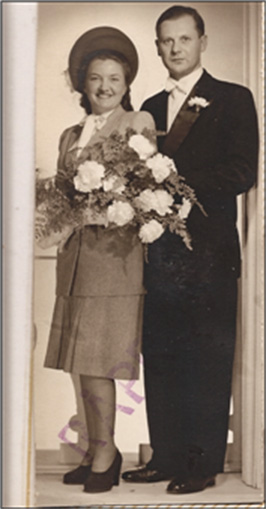
A wedding photo of Ednund Banasikowski with Zofia Brzozowska (Source: Rodzina Banasikowskich)
After establishing contact with the Polish government in exile, he reported to General Bór Komorowski on the last act of the Vilnius tragedy. While in London in 1947, he took part in the founding congresses of the Polish Combatants' Association (Stowarzyszenie Polskich Kombatantów, SPK) and the Home Army Circle. He was elected a member of the authorities of both organizations.
From 1947 to 1950, he was a member of the Main Council of the SPK in London, during the same years he was a member of the Supreme Council of the Home Army Circle and a founding member and president of the SPK in Sweden. From the moment he came to America, Edmund Banasikowski became the leader of the Polish community. He inspired others with his attitude and commitment.
In Exile: USA (Polish Leader, Journalist, an Inspirer of Polish Life)
In Milwaukee, he founded and served as chairman of the Polish Combatants' Association (SPK) from 1952 to 1955. In 1956, he activated the Polish American Congress (PAC) and was its chairman for 17 years, and later, from 1977, honorary chairman and director of the PAC at the United States level. On June 10, 1989, he was appointed to the United States Branch of the National Council of the Republic of Poland.
He co-edited the radio broadcasts "Echa z Polski" (Echoes from Poland) — a program in Polish language broadcast by American media in Milwaukee, which began in 1953. They were often broadcast by Radio Free Europe and accompanied Polonia for 50 years. His articles were published in London in the magazine "Orzeł Biały" (White Eagle) and many Polish newspapers in the USA. Edmund Banasikowski wrote political and historical articles, but he also wrote poetry and fairy tales for children. He was a long-time correspondent for Radio Free Europe. During his work as chairman of the Polish American Congress, Wisconsin branch, he established close cooperation with the United States government and the administration of John Kennedy.
The friendship and cooperation between Edmund Banasikowski and the congressman representing Wisconsin, Klemens Zabłocki, resulted in the funding by the US government and the Polish community of the University Children's Hospital in Krakow and the Klemens J. Zabłocki Outpatient Care Center, which was opened in 1992.
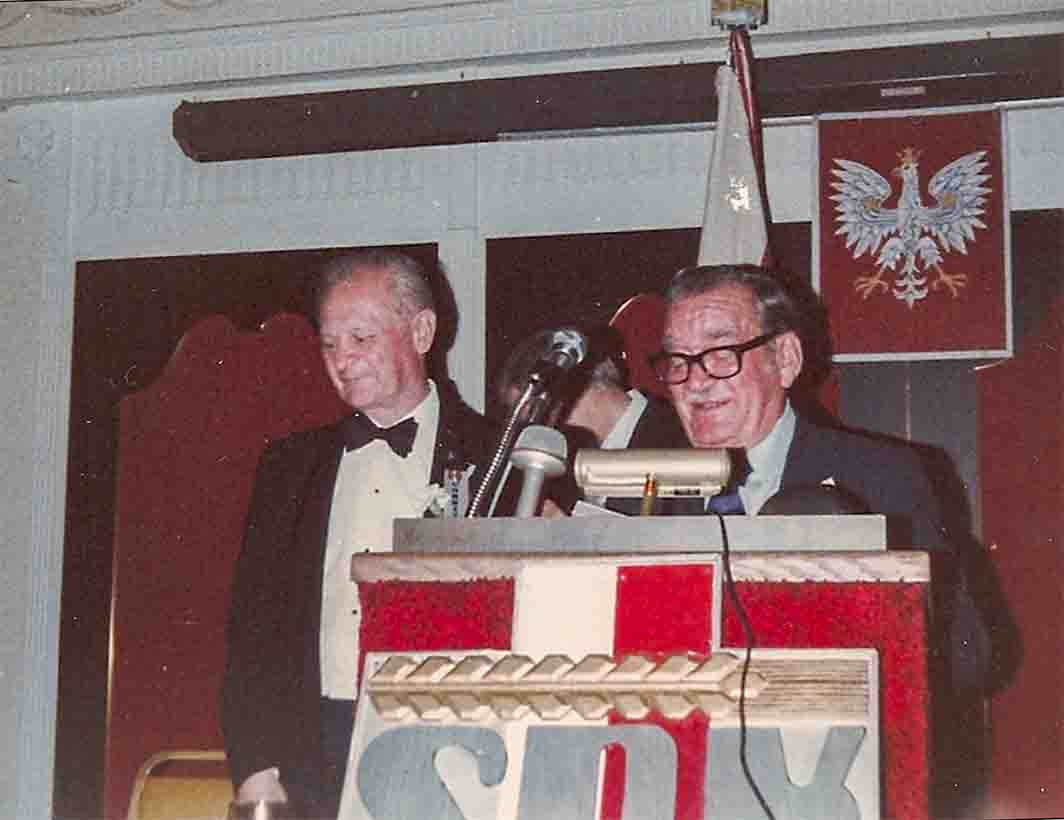
Zygmunt Banasikowski with Congressman Klemens Zabłocki (Source: The Banasikowski Family)
Edmund Banasikowski was one of the initiators and implementers of the U.S. Postal Service's famous millennium stamp. With the help of Congressman Zabłocki, he convinced the U.S. Postal Service's general manager, John Gronowski, to celebrate the Polish millennium by issuing a stamp with the Piast eagle. On the occasion of the millennium, he organized many ceremonies in Wisconsin emphasizing Poland's importance in history and culture.
Edmund Banasikowski invited outstanding Polish artists living in America and Europe to Milwaukee. Their artistic achievements were presented by: the outstanding pianist Witold Małcużyński, the opera singer Lucyna Szczepańska, the composer of the song "Czerwone maki na Monte Cassino" (Red Poppies on Monte Cassino) Feliks Konarski, his wife "Helenka Ochotniczka'" - Renata Bogdańska and the group "Wesoła Czwórka".
Among the distinguished guests were also veterans of World War II, political activists in exile, historians and publicists, such as: General Władysław Anders, Jan Nowak Jeziorański, Jan Karski, Józef Garliński, Cezary Chlebowski, Stefan Karboński, Zbigniew Stypułkowski, Kazimierz Łukomski, Alojzy Mazewski, and Janusz Krzyżanowski.
He also invited Primate Stefan Wyszyński to the celebrations of the 1000th anniversary of the Polish State. However, the Primate could not come, for political reasons, so during the Holy Mass organized in the Basilica of St. Josephat in Milwaukee, built by Poles, there was only an armchair decorated with flowers, intended for the Primate. There were many more such primate armchairs in Polish churches in the United States. Edmund Banasikowski was invited to other cities (London, Toronto, Chicago and many others...) for lectures and meetings. He always spoke about his fight for Poland and Polishness.
"On the Call of the Vilnius Land"
While in exile in Milwaukee, Edmund Banasikowski wrote down his war memories related to the Vilnius region in book form.
"When I read Edmund Banasikowski's book "Na zew Ziemi Wileńskiej" (On the Call of the Vilnius Land) I understood the whole story. My grandparents and parents used to talk about it quietly, but when I read it I understood our history," said priest Józef Aszkiełowicz from the Vilnius region.
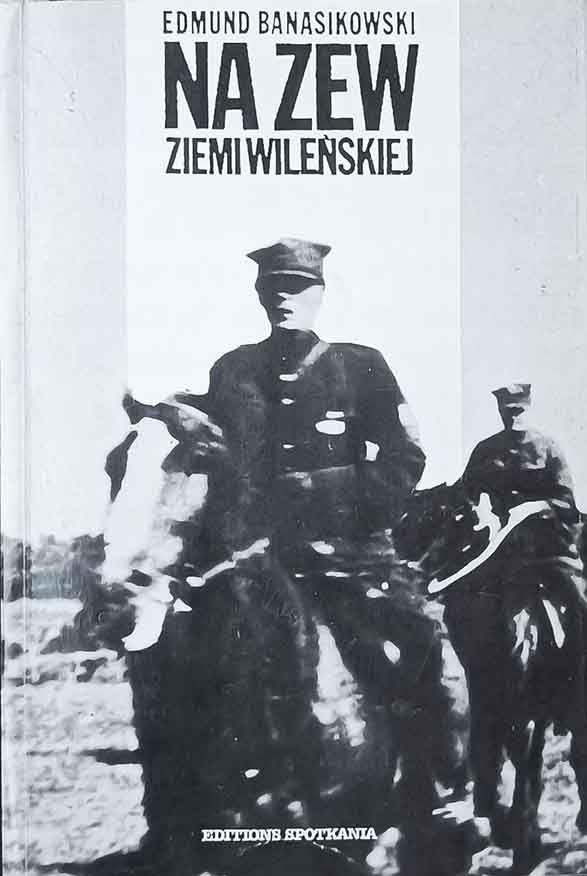
Cover of the book "On the Call of the Vilnius Land" (Source: Allegro.pl)
"Na zew Ziemi Wileńskiej" is an incredible story about the honor of a Polish soldier. It is a story about a hopeless fight to the very end, about strength of character, sacrifice, love for the homeland. The book presents the armed action of the Vilnius AK and the memory of those who, dying, believed that their death would not be in vain.
The author not only records his own memories, but also accounts collected among friends and documents collected in the Polish Underground State Study. This is a story about the true face of Germans, Russians and Lithuanians. The book describes what happened at Lake Narocz in the autumn of 1943, what happened in Vilnius under German occupation and Lithuanian administration. How negotiations were held with Soviet partisans and Lithuanian democrats.
The author also presents the background of the Soviet partisan strategy – the attack after the Battle of Worniany – in January 1944, and who liquidated the Lithuanian division of General Plechavicius collaborating with the Germans – in March 1944.
However, the most important is the documentary image of Operation Ostra Brama, i.e. the action of capturing Vilnius on July 6/7, 1944 and why it could not have succeeded. The author explains why so many soldiers from the Oszmiana Group of the Home Army of Major "Jarema" are buried at Rossa in Vilnius – at the grave of the "Mother and the Heart of the Son".
The book tells the story of the Polish battles at Krawczuny and Mejszagoła, and who hung the Polish flag on the Castle Hill tower twice in Vilnius. However, no one knows that Colonel Edmund Banasikowski is one of the first authors who, in the book "Na zew Ziemi Wileńskiej" published in 1990, was the first to mention the heroic act of nurse Danuta "Inka" Siedzikówna and was one of the first to use the term "unbroken soldiers" in Polish historiography.
After 1989, the memory of the unwavering soldiers did not make its way through the Polish media, even though the book "Na zew Ziemi Wileńskiej" was read in installments on the airwaves of Radio Free Europe. On April 5, 1989, the Association of Polish Writers Abroad recognized the book "Na zew Ziemi Wileńskiej" as the best book of 1988. The award ceremony took place on September 19, 1989 in London, after Poland had begun its long journey to democracy.
Appreciated Near the End of His Life
"The Unwavering Soldier" — Colonel Edmund Banasikowski — ended the war in the rank of captain, but for his work for Poland's independence he was promoted to the rank of colonel by the Government of the Republic of Poland in Exile and later by Mazowiecki's government.
He was honored with many decorations, including: the Silver Cross of the Virtuti Militari Order, the Cross of Valor, the Gold Cross of Merit with Swords, the Knight's Cross of the Order of Polonia Restituta. On his 90th birthday, he received the Commander's Cross of the Order of Polonia Restituta, awarded by the President of the Republic of Poland, Lech Wałęsa. On May 3, 1993, on the anniversary of the Constitution, the decoration was presented to him by the Consul General in Chicago, Michał Grocholski, son of Adam Remigiusz Grocholski, who was the first, direct commander of Edmund Banasikowski in "Wachlarz".
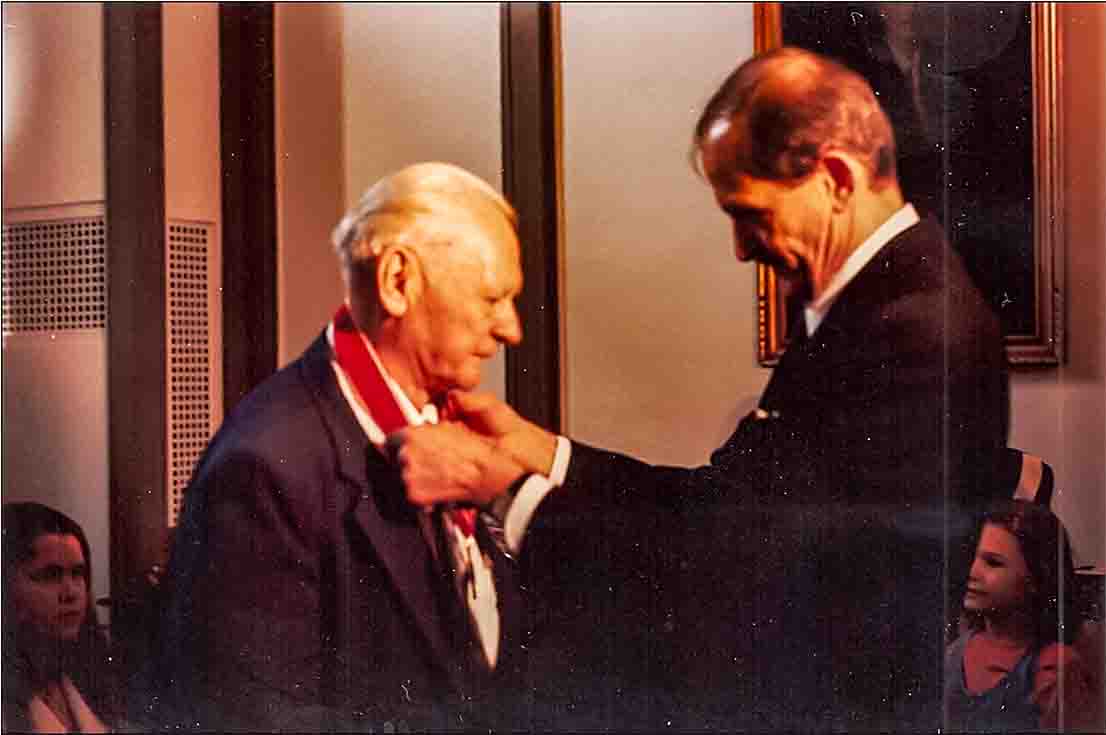
(Source: Banasikowski Family)
Edmund Banasikowski lived to the age of 96. He died in DeWitt, Michigan, USA on April 3, 2010 and is buried in the St. Wojciech Cemetery in Milwaukee. He rests in the same cemetery where the soldiers of the "Blue Army" of General Józef Haller, the armored men of General Maczek, the paratroopers of General Sosabowski, the Warsaw insurgents and many others found their eternal rest.
"He was a wonderful man, honest, modest, a great patriot who cared about Poland throughout his life," emphasized his daughter Barbara Banasikowski-Smith (1948-2018).
"He was an officer of the Home Army who had to flee the country he fought for and loved in order to avoid death, because after the war there was no place in communist Poland for those who could not come to terms with the new totalitarianism," Ryszard Banasikowski recalled his father at the ceremony of laying a plaque commemorating Colonel Edmund Banasikowski at the Powązki Cemetery in Warsaw on July 25, 2014.
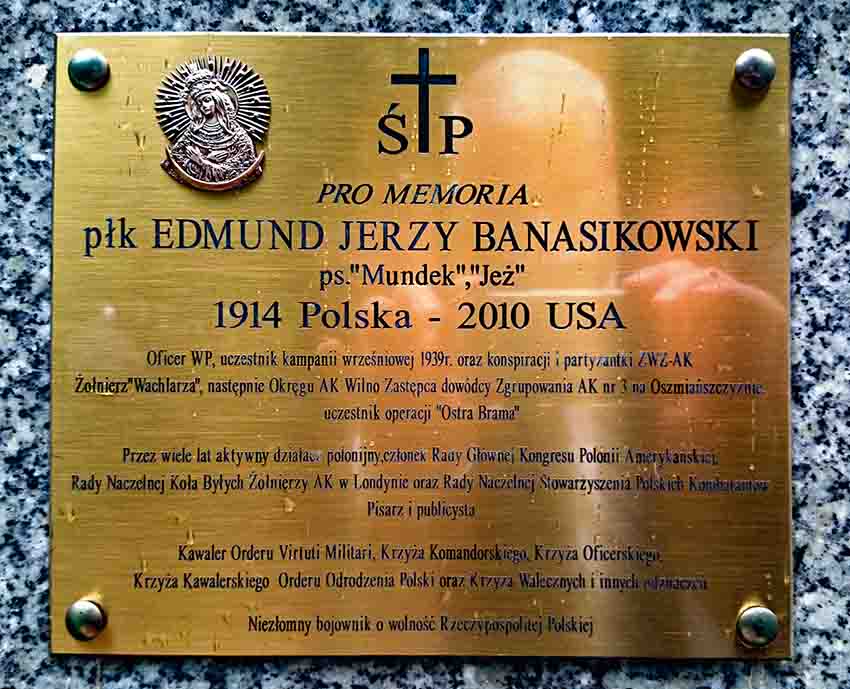
A plaque at the Powązki Cemetery in Warsaw (Source: Banasikowski Family)
"For many years, Edmund Banasikowski was a great guardian, as we say in the Institute of National Remembrance: a custodian of national memory. He took care to ensure that the memory of a great and important fragment of our history was preserved for future generations," said Łukasz Kamiński during the ceremony, which took place in the Pantheon of Fighting Polish Soldiers at the Powązki Military Cemetery in Warsaw. The President of the IPN also emphasized that for many historians, Banasikowski's book "Na zew Ziemi Wileńskiej" will remain the foundation for anyone interested in the history of the Home Army, including the Vilnius AK.
Summary
It is impossible to list all of Colonel Banasikowski's achievements in such a short time. His rich life, full of heroism and patriotism, deserves a special monograph. Edmund Banasikowski's work belongs to the "golden years" of Polonia in Wisconsin. His achievements should be recalled and emphasized especially now, when the Polonia relay of generations in Wisconsin has lost its baton.
In the Polish narrative about unwavering soldiers, we often forget that some of them continued their fight for an independent and sovereign Poland in exile. If we want to preserve our identity, let us also remember our heroes in exile, those who built Polish identity abroad with their deeds.
Translation from Polish by Andrew Woźniewicz.



